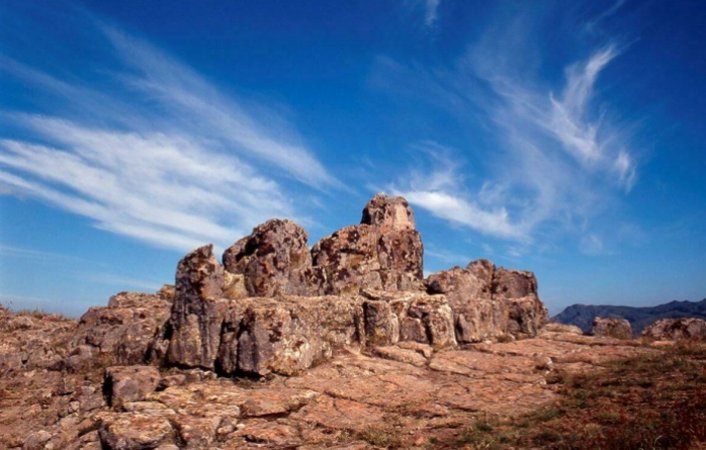Ellen Lloyd – AncientPages.com – All around the world there are magnificent ancient structures that show our ancestors have always been interested in studying the skies. Our interest in the cosmos is as old as humanity. Archaeological discoveries keep reminding us ancient people possessed more astronomical knowledge than previously thought.

Megalithic Observatory Kokino near Kumanovo in Macedonia. Credit: US Government – Public Domain
Several ancient cultures achieved a deep understanding of the celestial movements, cycles of the sun, moon, stars, and planets, and they often used this knowledge to build astronomically oriented temples on the apex of the hills so priests could watch the Sun, the Moon, stars and all planets that could be observed.
There is no doubt fascination with the cosmos was widespread in Egypt, Babylon, Sumer, India, and South America, and we can see proof of this by examining ancient temples, and other sacred structures. However, there is also evidence of ancient less known, yet sophisticated astronomical knowledge in Europe. For example, scientists were stunned when they have discovered the world’s oldest Moon map carved into Ireland’s 5,000-year-old tomb at Knowth.
Equally impressive are the carved-engraved bone plates discovered in France have revealed people created astonishing lunar and solar calendars 30,000 B.C. When and where people started to study the heavens and celestial objects is impossible to say, but if we turn our attention to Europe, we discover extraordinary astronomical knowledge that shows celestial objects were of great importance to our ancestors.
In the Republic of Macedonia, there is an interesting Bronze Age site known as Kokino. Despite being so old, the site was first discovered in 2001 by archeologist Jovica Stankovski.
Locals were most likely familiar with this historical place long before, but the outside world learned about the site only recently.

What makes this particular place so special are the archaeoastronomical characteristics of the megalithic observatory Kokino that is located approximately 30 km from the town of Kumanovo, and about 6 km from the Serbian border, in the Staro Nagoričane municipality.
Scientists have discovered giant stones arranged in puzzling patterns that offer evidence Kokino was used by people as far back as 4,000 years ago.
Kokino is on the foot of a mountain peak, at an elevation of over 3,300 feet. While examining the site scientists found that “on the west side or in on the lower platform of the site there are three specifically crafted observation posts from where the ancient observers continuously monitored the Sun and Moon’s movement. On an about 50 to 85 m distance, in the rocks on the east horizon, which are also placed on the upper platform of the site, there are specially crafted markers, marking the places of the Sun rise and full Moon rise in exactly determined and characteristics days.” 1
Like many other ancient civilizations, people in the Balkans were interested in the Full Moon that is related to numerous ancient myths and legends and even paranormal tales.

Kokino Megalithic Observatory. Credit: Darko Nikolovski – CC BY-SA 3.0
The studies of the Moon at the megalithic Kokino observatory led to the development of a lunar calendar that people used to determine “the moment of switch between the summer and winter and the beginning of the New Year. As in all other cases, the lunar calendar that was developed and used on the megalithic Observatory Kokino had 19 lunar years’ cycle.

About 4,000 years ago people in Macedonia studied the moon and created sophisticated lunar calendars. Credit: Orion 8 – CC BY-SA 3.0
Regular lunar years had a length of 354 days and consisted of 6 lunar months with 29 days and six lunar months with 30 days length. Seven lunar years had thirteen lunar months, due to the fact that according to previously determined scheme one lunar month with 30 days was added. The method of development of the lunar calendar can be demonstrated even today by monitoring the full Moon rise.” 1
The megalithic Kokino observatory adds to the lists of ancient sites demonstrating our ancestors’ profound knowledge of astronomy, and we can once again say ancient people were much more advanced than previously thought. The fact that the method used to develop the lunar calendar at this site 4,000 years ago is still correct is an incredible ancient achievement.
Written by Ellen Lloyd – AncientPages.com
Copyright © AncientPages.com All rights reserved. This material may not be published, broadcast, rewritten or redistributed in whole or part without the express written permission of AncientPages.com
Expand for references
- Cenev, G – Three Worlds of the Megalithic Observatory Kokino, Journal: The Inspiration of Astronomical Phenomena VI.





